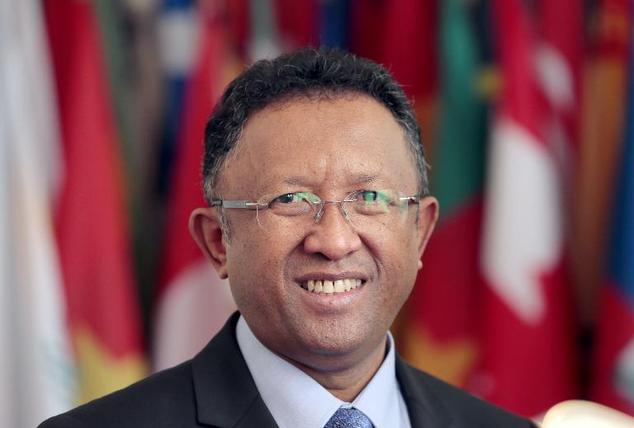At the airport, in the banks, and elsewhere in public, people are wearing protective masks. Gatherings are forbidden and schools remain closed.

The president is talking about “war” – in the face of the outbreak of the highly-lethal and easily contagious plague that has plunged the island of Madagascar into a state of fear.
The fact that the plague is spreading in the densely-populated urban areas has caused major concern.
In early October, the first long lines were seen forming at pharmacies in the capital Antananarivo as people tried quickly to obtain antibiotic medicines to protect themselves.
The supplies quickly sold out and the government urged people to stay calm.
But then the Health Ministry sent SMS messages to every telephone number registered in the capital, with this warning: “Plague, the quick death.
If you have a cough and some of these symptoms – fever, sore throat, breathlessness, coughing blood – go to the hospital.”
In the meantime, around 50 people have died, with the numbers doubling within a week. About 450 others are ill – half of them in Antananarivo.
Smaller-scale outbreaks of the disease are not rare on the island off of Africa’s eastern coast. But this time the numbers are much larger.
It is also reported that a vacationer returning to the Seychelles from Madagascar brought the disease with him there. An epidemic of this size has not been seen since one in the Indian region of Surat in 1994.
Schools in Antananarivo, a city of 2.2 million people, and in other places are eerily empty, while classes were also called off at the university.
“The university is completely empty,” says one student, Antsa Randriamanalina, 20.
She said only a few students were on campus to work on group projects. “I am getting worried. I hope it doesn’t get worse.”
President Hery Rajaonarimampianina is putting on a show of confidence.
“We are at war, but today we have, I believe, the weapons and munitions to conquer this epidemic,” he said at ceremonies for the handover of aid materials from the World Health Organisation (WHO), which sent some 1.5 million doses of antibiotics, enough to treat 5,000 people who have become infected and to protect 100,000 others.
“The more quickly we act, the more lives we can save,” said WHO chief for Madagascar, Charlotte Ndiaye.
The bubonic plague is caused by a bacteria called yersinia pestis which is chiefly spread by fleas and carried by rats. If a human is bitten by an infected flea, the symptoms will appear up to seven days later, first as if a heavy flu and then thickly swelling lymph nodes.
In Madagascar, the vast majority of people infected with plague have contracted the more serious pneumonic form of the disease, which is passed on by breathing in respiratory droplets.
With an early diagnosis, the chances of healing with antibiotics are high. But in the advanced stages, the bubonic plague can morph into pneumonic plague in the lungs. This is transmitted by droplets in the air, similar to the flu, and can quickly spread, with an incubation period of just 24 hours. Untreated, pneumonic plague can lead quickly to death.
There is scarcely any other disease in human history that has spread so much fear and horror as the plague. In Europe, between 1347 and 1353, the “Black Death” claimed millions of lives, possibly as much as one-third of the total population.
The current epidemic in Antananarivo is above all hitting the poor areas hardest. Many of the streets are piled with garbage – ideal conditions for rats.
To try to prevent a panic, authorities have set up tents at the entrances of the poor areas to provide residents with expert information.
Madagascar, with around 25 million people, for years now has been the country that worldwide has had the most reported plague cases, especially the bubonic plague.
If a village reports a case, the health authorities sweep in to drive out the rats, disinfect houses and spray insecticides to kill the fleas. Close relatives of the victims must take antibiotics as a precautionary measure.
The bodies of those killed by the plague are washed in a chlorine solution and rubbed down with lime, for even the dead can still spread the infection.
Funeral rituals such as the customary wake of several days in the home of the deceased are forbidden in plague cases. And the remains are buried far from the cemeteries.
“Our teams are well-schooled in fighting the isolated outbreaks of the plague in the countryside,” Health Minister Mamy Lalatiana Andriamanarivo told the French radio network RFI.
“But this time it is different. This is the pneumonic plague – and it’s in the city.”
